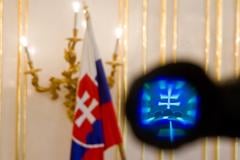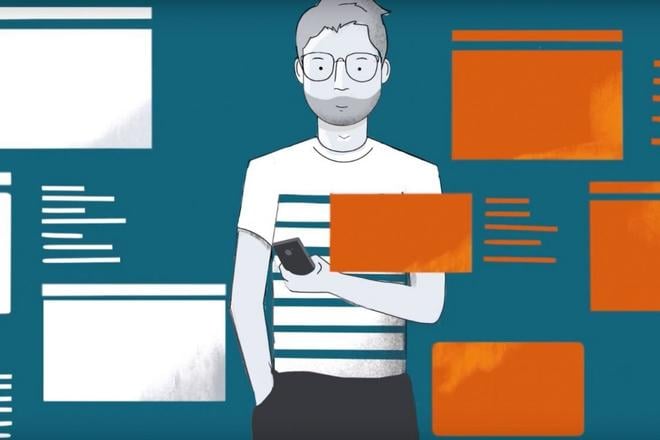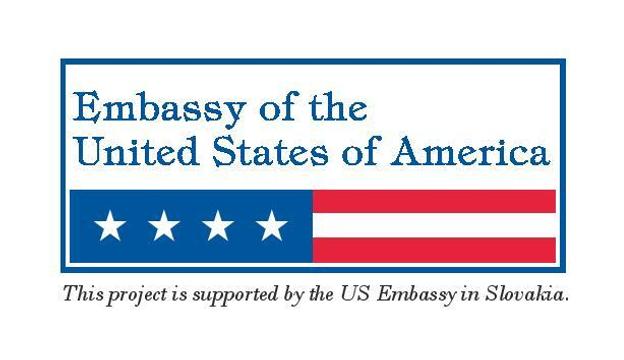A glossary of words is also published online.
“Hi, I am Checkbot, and I will help you uncover rubbish on the Internet,” a brown-haired young boy wearing glasses and a blue-and-white T-shirt with an illuminati-like logo introduces himself.
The boy is a bot. The Seesame PR agency launched this somewhat humanised tool as a means of chatting with Slovaks on Facebook at the end of March 2019 in response to Facebook’s poor reaction to fake news.
It never tells you whether it is true or not; it just helps you decide for yourself.“
The Collins dictionary defines fake news as “false, often sensational information disseminated under the guise of news reporting”, and proclaimed it the word of the year in 2017. The Slovak internet faced the first large-scale disinformation campaign after the war in Ukraine started in 2014, and the campaigns have continued ever since.
“The main goal of Checkbot is not to stop the spreading of disinformation,” teacher and activist Juraj Smatana, who is one of the creators of Checkbot, told The Slovak Spectator.
Educational tool that warns
The chatbot communicates only with people who want to engage in conversation with it and acknowledge the issue of fake news, Smatana added.
In Slovakia, as much as 45.4 percent of people tended to believe conspiracy theories in 2014, the Slovak Academy of Sciences (SAV) claimed after it had 1,156 Slovaks surveyed by the Focus agency within ISSP research.
The Slovak chatbot can uncover some misinformation, using two online databases: Konspiratori.sk and Blbec.online. It also navigates users to detect manipulation in articles and learn more about fake news through several questions concerning an author, the origin of a photo, and hateful statements.

“It never tells you whether it is true or not; it just helps you decide for yourself,” Seesame PR expert Dávid Benedig said.
In addition to the chat algorithm, Checkbot can actively enter into discussions below articles published by disinformation media, when commanded by a person, and can thus warn against fake news.
“Once you go through that educational process, it will stick with you and you will be capable of sharing that knowledge with everybody around you,” Tomáš Kriššák of the Open Society Foundation, who co-created the chatbot, told The Slovak Spectator.
For instance, young people can teach their parents and grandparents, who may not necessarily be Facebook users, about the dangers of fake news. Smatana also uses the tool during debates on disinformation and propaganda with students at different types of schools.
Checkbot in Lithuania
Checkbot was born when the organisations behind the project realised people had been asking the same questions during workshops on disinformation they have held at schools and festivals.
A number of improvements have been made since its launch. “The biggest upgrade may be the fact that Checkbot is now able to check trustworthiness of an author of a Facebook post,” claimed Benedig. “At the start, we were only able to check links outside of Facebook.”
it knows how to check the origin of articles published outside of Facebook and learn more about the authors of the Facebook posts in question,” claimed Benedig.
As much as 45.4 percent of people tended to believe conspiracy theories in 2014.“
The tool has checked more than 11,000 links and is in touch with more than 10,000 Facebook users in Slovakia. Checkbot’s activities have not only reached the European Parliament, but also half a million Slovaks on Facebook. A total of 2.7 million Slovaks use the social media platform today.
“Checkbot has also impressed the Debunk.eu organisation that uncovers fake news in the Baltic region,” Benedig told The Slovak Spectator.
The organisation possesses unique artificial intelligence (AI) technology, which will be a part of Checkbot. Its Lithuanian version should thus be smarter, Benedig went on to say.
When the chatbot was launched in March, its creators also said they would export the tool to the Czech Republic since one of the databases checks Slovak and Czech disinformation portals simultaneously.
Young people welcome Checkbot
The Facebook tool is positively perceived by the Youth Council of Slovakia (RMS) even though the Council does not promote it among the youth, RMS head Katarína Batková told The Slovak Spectator.
Today, only 16 percent of young Slovaks, ages 15 to 24, verify information by checking multiple sources, the RMS survey from 2018 showed. In addition, only 56 percent trust traditional media.
“Our survey revealed that young people check information mostly in the circle of their friends, acquaintances and family, so there may be so-called information bubbles around them,” Batková claimed. A thousand young Slovaks were surveyed.
Although the Slovak chatbot is a suitable tool to burst these bubbles, the RMS said, schools should draw more attention to media literacy education as well.
Listen to the podcast:
The Spectator College is a programme designed to support the study and teaching of English in Slovakia, as well as to inspire interest in important public issues among young people.



 Checkbot from Slovakia, running on Facebook Messenger from March 2019, aims to educate Slovaks about and warn them against disinformation (source: Checkbot)
Checkbot from Slovakia, running on Facebook Messenger from March 2019, aims to educate Slovaks about and warn them against disinformation (source: Checkbot)
